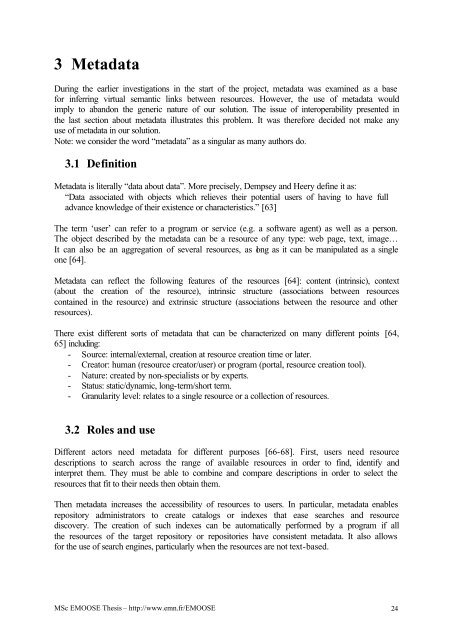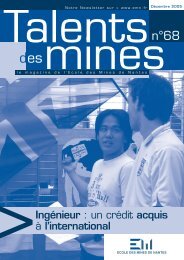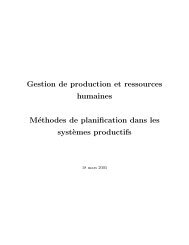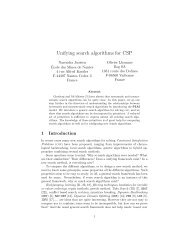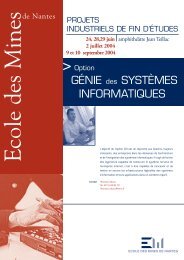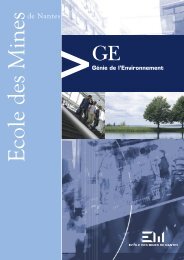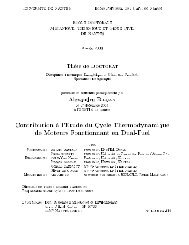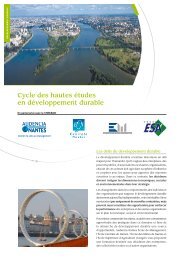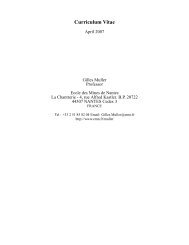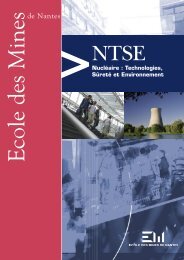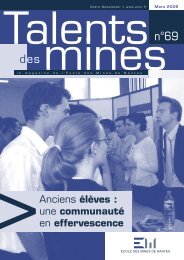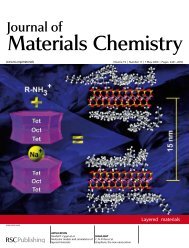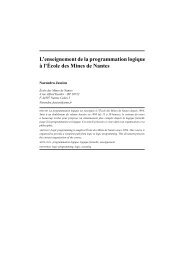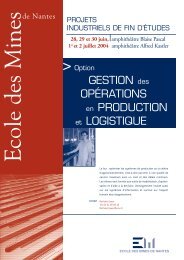pdf - 395 K - Ecole des mines de Nantes
pdf - 395 K - Ecole des mines de Nantes
pdf - 395 K - Ecole des mines de Nantes
You also want an ePaper? Increase the reach of your titles
YUMPU automatically turns print PDFs into web optimized ePapers that Google loves.
3 MetadataDuring the earlier investigations in the start of the project, metadata was examined as a basefor inferring virtual semantic links between resources. However, the use of metadata wouldimply to abandon the generic nature of our solution. The issue of interoperability presented inthe last section about metadata illustrates this problem. It was therefore <strong>de</strong>ci<strong>de</strong>d not make anyuse of metadata in our solution.Note: we consi<strong>de</strong>r the word “metadata” as a singular as many authors do.3.1 DefinitionMetadata is literally “data about data”. More precisely, Dempsey and Heery <strong>de</strong>fine it as:“Data associated with objects which relieves their potential users of having to have fulladvance knowledge of their existence or characteristics.” [63]The term ‘user’ can refer to a program or service (e.g. a software agent) as well as a person.The object <strong><strong>de</strong>s</strong>cribed by the metadata can be a resource of any type: web page, text, image…It can also be an aggregation of several resources, as long as it can be manipulated as a singleone [64].Metadata can reflect the following features of the resources [64]: content (intrinsic), context(about the creation of the resource), intrinsic structure (associations between resourcescontained in the resource) and extrinsic structure (associations between the resource and otherresources).There exist different sorts of metadata that can be characterized on many different points [64,65] including:- Source: internal/external, creation at resource creation time or later.- Creator: human (resource creator/user) or program (portal, resource creation tool).- Nature: created by non-specialists or by experts.- Status: static/dynamic, long-term/short term.- Granularity level: relates to a single resource or a collection of resources.3.2 Roles and useDifferent actors need metadata for different purposes [66-68]. First, users need resource<strong><strong>de</strong>s</strong>criptions to search across the range of available resources in or<strong>de</strong>r to find, i<strong>de</strong>ntify andinterpret them. They must be able to combine and compare <strong><strong>de</strong>s</strong>criptions in or<strong>de</strong>r to select theresources that fit to their needs then obtain them.Then metadata increases the accessibility of resources to users. In particular, metadata enablesrepository administrators to create catalogs or in<strong>de</strong>xes that ease searches and resourcediscovery. The creation of such in<strong>de</strong>xes can be automatically performed by a program if allthe resources of the target repository or repositories have consistent metadata. It also allowsfor the use of search engines, particularly when the resources are not text-based.MSc EMOOSE Thesis – http://www.emn.fr/EMOOSE 24


